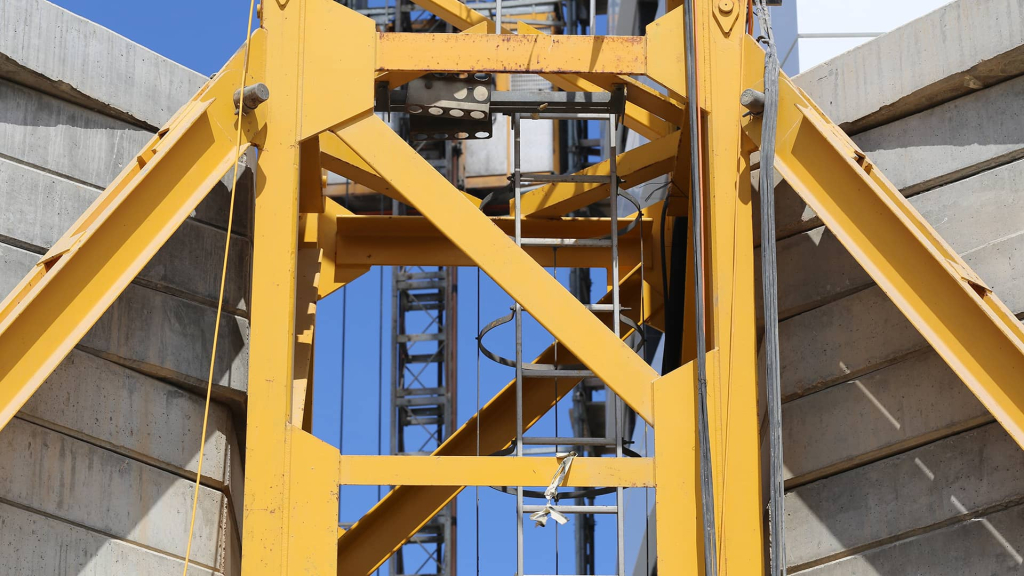Impact of wild weather
This article first appeared in Lloyd’s List Australia on 5 July 2012 and is reproduced with kind permission. www.lloydslistaustralia.com.au.
For contractors, developers and their lawyers, port construction projects involve a multitude of construction risks to agonize over. Although most construction contracts seek to address every conceivable eventuality, the risks on port projects are unique as they involve work in harsh weather, unpredictable conditions and on land that may be unstable or unsuitable for normal construction methods.
Australia has a number of major port development and expansion projects in progress and in the pipeline from Gorgon to Gladstone and the recently announced $1.2bn expansion of the Port of Melbourne. These project have faced numerous and well reported construction challenges. The cost of the Gorgon LNG jetty, for example, is reported to have increased from the initial $900 million to $1.85billion due to weather-related challenges and an increased scope of work.
This article does not seek to provide an exhaustive list of the construction challenges that parties need to put their minds to on port projects. Two of the more significant ones are considered, namely: (a) latent conditions and (b) adverse weather risks. In relation to latent conditions, the article also examines the option of transferring the risk to consultants through novation agreements.
Latent conditions
It would be a rare thing for any port construction project to proceed without some unforeseen ground conditions being uncovered. The cost of dredging or land reclamation works can be significantly impacted by what lies beneath the surface of the harbour. There have been a number of well know cases in Australia which illustrate this point such as the case involving Newcastle harbour where disused coal workings were discovered under the harbour costing the contractor an extra $6m.
Many projects seek to transfer all the risk for latent conditions to the contractor. The latent conditions clause will expect the contractor to have examined all information provided by the developer or reasonably made available and to have inspected the site and acquainted itself with all site conditions. Claims for additional costs are then permitted for differences between actual site condition and those that the contractor ought to have become aware of. The question of the contractor’s imputed knowledge becomes key.
Some clauses go further and deem the contractor to have knowledge of all matters concerning the site regardless of whether the conditions are reasonably ascertainable (for example, clauses modelled on NPWC 3).
While there is obvious merit from the principal’s perspective in such an arrangement, the industry view has generally been to adopt a realistic approach. After all, there is little point in casting all responsibility upon a contractor who has no means of ever determining the full extent of the risks.
It is also simply a recipe for disputes. Contractors are becoming more adept at developing imaginative arguments to overcome the contractual obstacles and, with varying degrees of success, claims have been made on the basis of estoppel, misleading and deceptive conduct and against consultants who provide inaccurate information.
A number of the Australian Standard contracts seek to provide a more ‘balanced’ allocation of risk, adopting a ‘reasonable contractor test’ under which claims can be made for latent conditions where a competent contractor inspecting all the information made available and the site would not have had knowledge of the conditions (AS4000). This is by no means a panacea as there will be differences over what is understood to be reasonable in each case.
Another approach is for the principal to instruct consultants such as geotechnical or marine surveyors prior to the main contract being put to tender and to then novate these agreements to the contractor.
Novation of consultants agreements
A principal may employ a number of consultants prior to tender for a wide range of reasons. Civil engineers are often employed for the purposes of preparing a preliminary design and, as discussed above, geotech consultants can be used to obtain information on potential latent conditions. The outcome of the investigations can be provided to the tenderers for the purposes of pricing the work. More accurate pricing means that the principal avoids having to pay for the contingency mark-ups for latent conditions which may never materialise. Once the contract is let, the D&C contractor usually assumes responsibility for the consultant’s work product with a potential right of recourse in the event that the information is inaccurate.
Key problem areas to look out for are as follows:
- Contractors may add contingencies to their bids to take into account defects in the consultant’s design.
- Longer bid periods may follow to allow tenderers to review consultant’s work product.
- Contractors may refuse to bid when they have doubts over the accuracy of the work product.
- The consultant’s agreement and the D&C agreement needs to be “back to back”. The D&C contract may, for example, be a schedule of rates contract and the D&C contract a fixed price contract, leaving the D&C contractor exposed if more work is required to complete the project. In addition, the D&C contractor may have warranted that the design be fit for its intended purpose while the consultant’s agreement is limited to an obligation to exercise reasonable skill and care.
- Problems may arise where the contractor cannot claim against the consultant because the breaches occurred prior to the novation and the novation agreement fails to transfer a right to the contractor to take action against the consultant for pre-novation breaches. The last point, which is illustrated in the Scottish case of Blyth & Blyth Ltd v Carillion Construction Ltd (2001) ([2001] Scot CS 90; 79 ConLR 142) (Carillion), is briefly discussed below.
In Carillion, the owners of a leisure centre in Scotland novated their consultant design agreement with Blyth & Blyth to their D&C builder, Carillion. Carillion claimed against Blyth & Blyth for defective designs prepared prior to the novation. The court held that due to the wording of the novation agreement, Carillion succeeded to the rights of the owner prior to the novation and, as the owner had suffered no loss, Carillion had no claim. Although no doubt welcomed by the consultant, this outcome was probably not what was intended by the parties when the contract was signed!
This problem is addressed in the standard Deed of Novation annexed to AS4902 which provides that both the principal and the consultant warrant to the contractor that the work carried out by the consultant prior to the novation is in accordance with the contract.
Weather delays
Weather delays ranging from extreme conditions such as cyclones to the more mundane such as persistent rain can have a significant effect on the progress of a project. For example, different methods may be required to cure concrete in rain and flooding and wind can make access to the site impossible. Off-shore dredging can, for example, be rendered impossible due to wave and swell conditions.
Not all contracts allow claims by contractors for weather related delays and those that do may only allow for extensions of time (EOT) but not the costs.
Some contracts allow only EOTs for ‘exceptionally adverse weather conditions’. This phrase is not necessarily limited to cyclones or tornadoes which are generally covered separately as a force majeure events. For other conditions, such as rain and high winds, a comparison is usually drawn between the conditions experienced and the those encountered for the particular time of the year over a lengthy period, for example ten years.
For greater certainty, it may be advisable to specify the objective criteria by which to measure the exceptional nature of the conditions. For example, meteorological data can be specified in the contract. The contract may exclude the first few days of bad weather. Caution should however be exercised as minor disruptions during critical stages of the program can have a significant impact.
Where progress is delayed by the owner (for example in not giving access) and the delay results in the work progressing in poor weather which would not have been the case had there been no owner delay, it has been held that a contractor is entitled to an EOT and prolongation costs regardless of the exceptional nature of the weather.
It may be a false economy to require a contractor to assume all responsibility for certain weather conditions if the potential cost to the contractor is then passed on to the principal as tender price contingency. As with latent conditions, the principal will want to avoid having to pay for this if the contingency never materialises. It may be better to allow the contractor to claim for weather conditions, whether exceptional or otherwise, subject to proof that the contractor has mitigated the delay and can show that there has been an impact on the program. Note that even if conditions need to be exceptional, the contractor will usually still need to prove that the delay was on the critical path to the date for practical completion.
Conclusion
Many disputes turn on the risk allocation in the agreement. For potential big ticket items like weather delays and latent conditions, the risk allocation agreed during negotiations needs to be reflected in the contract. Where this does not happen, it can generate a secondary latent condition in the form of a bottomless financial pit for one of the parties. Trawling through the contract negotiations to establish the risk allocation is a difficult and, under Australian law, fruitless exercise. In a nutshell, it pays to get it right from the outset.










